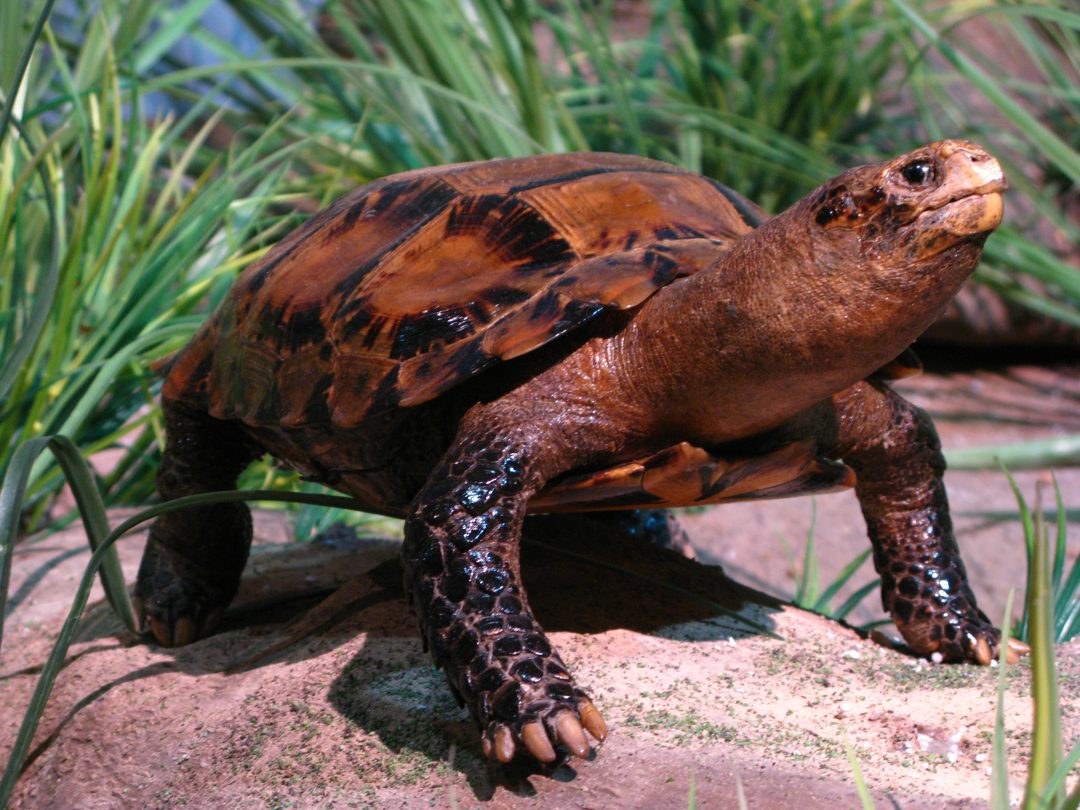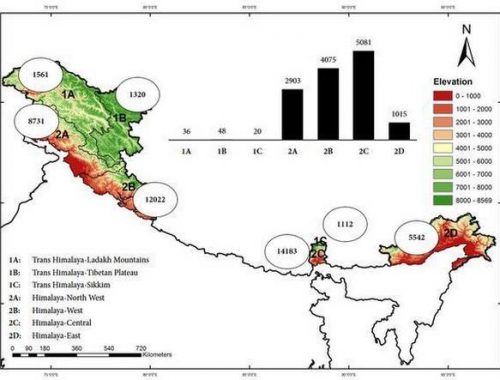Another ‘impressed’ tortoise, also known as Manouria impressa, was sighted in Arunachal Pradesh recently. This is the second time this tortoise species has been found since its discovery in the state in June this year.
The second sighting of Manouria Impressa occurred at Kakoi area under Banderdewa forest division in Papum Pare district recently, officials said.
The tortoise is a young male, which was rescued by one Waru Nakong, a native of Kakoi. The rescued tortoise was handed over to Itanagar zoo on Friday.
It was later handed over to the Itanagar zoo.
The impressed tortoise (Manouria impressa), occurs in mountainous forest areas in Southeast Asia in Burma, southern China, Thailand, Laos, Vietnam, Cambodia, Malaysia and Northeast India[2]. The species has a golden brown shell and skin. Adults are much smaller than their relatives the Asian forest tortoise (Manouria emys), with a maximum size of 35 cm (14 in) carapace length.
The impressed tortoise lives at high elevations, up to 2,000 m (6,600 ft). Its behavior is little known; diet in the wild may consist largely of mushrooms, although bamboo shoots are also eaten. The species is known for being difficult to keep alive in captivity; although its status in the wild is uncertain, it is eaten widely by local people and little captive breeding has occurred.
Nakong said his father sighted the tortoise and informed him about it. He added that earlier the villagers used to kill tortoises for food, but now he is hopeful that they will not do so as they know these tortoises are an endangered species.
Range forest officer of Raga under Hapoli Forest Division, Bunty Tao, has first discovered the rare species of the tortoise. Right now, there are three Manouria Impressa in the Itanagar Zoo, out of which two are male and one female. The one rescued from Kakoi is a young male tortoise.
Because of the discovery of this rare species of tortoise in Arunachal, the International Union for Conservation of Nature (IUCN) has written a letter of appreciation to the state forest department, informed Tao.
The discovery of Manouria Impressa in June this year in Yazali under Lower Subansiri district has increased the total number to 29 species of non-marine chelonians and five recorded tortoises in the country.
According to an expert, the male is smaller than the female, which is 30cm in length. This tortoise eats mushroom, cucumber, pumpkin along with few other selective food items, informed SC Paul, a forester in the Itanagar Biological Park. PTI




